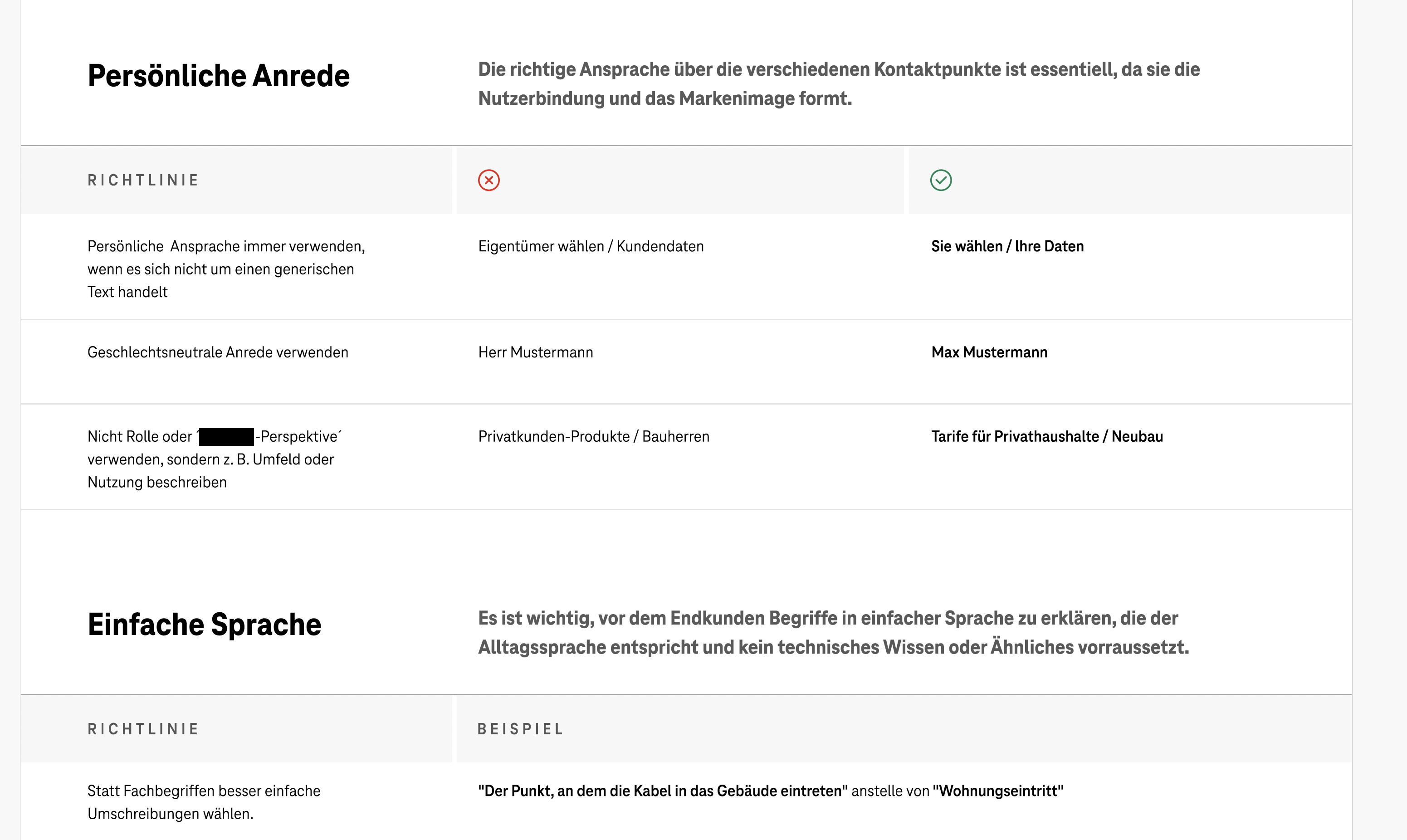
While at Manyone, I worked on a complex digital platform for a client in the infrastructure industry. As the project grew, content writing tasks increased, so we decided to build our own tool to cope with the workload. So we built a custom-trained GPT, which is now deeply integrated into our process as a writing partner that helps review, refine, and simplify copy based on our defined tone of voice.
We needed text that made complex information easy to understand, so users wouldn’t get frustrated or need extra support from the customer service. And we needed consist texts to build trust and create a cohesive experience. But that was hard to achieve. The platform involved a lot of technical terminology and information that was hard to explain. Additionally, multiple team members were involved and none of us were UX writing specialists. So keeping language clear and aligned took time we didn’t have.

To solve this, we developed a language assistant, a ChatGPT-based tool tailored for UX writing in our product context. The assistant runs in the browser via ChatGPT and is easy to share with colleagues through a simple link. Users can rewrite existing text or generate new ones based on project-specific input. It simplifies complex language, aligns with the defined tone, and outputs clear, on-brand copy, letting UX designers focus on selecting and structuring the most important information the user needs.
What stood out most was how the assistant explains the changes it makes. These explanations showed how it applied specific language rules. See in the example below (Sorry, German only) These explanations helped clarify not only what was changed, but why and that transparency made it easier to trust the results and refine our prompts when needed.


We trained the GPT using a defined language guideline, real project texts, and a technical terms sheet. The language guideline played a central role. We wrote it by going through existing texts, spotting unclear phrases, and deciding how to convey information in a simpler and more consistent manner. These included how we address users (Persönliche Anrede), how we translate technical terminoligy into plain, everyday language (Einfache Sprache), how we name and distinguish involved user groups (Personengruppen), and how we define and consistently apply domain-specific terms (Fachbegriffe).


A big part of the work was also refining the GPT instructions so that it would ignore rules, thereby making it easier to collaborate. For example, we taught it always to output what it changed and why, making it easier to check whether it applied the language guide correctly.


Looking back, building the tool was a real boost for us. It made our copywriting faster and easier, needing half the time as before for most tasks. The assistant quickly became an integral part of our daily workflow and even helped new team members get on board faster by explaining technical terms to them. Still, the quality of the output depends on the quality of the input. If the structure and intent are unclear, the GPT will generate polished text, but it may miss the point. What worked best for us was drafting what we wanted to say first, then using GPT to shape that into clear, concise copy that matched our tone.
